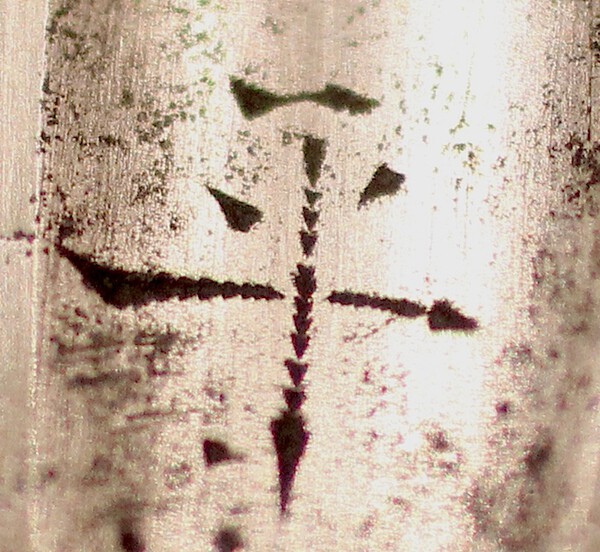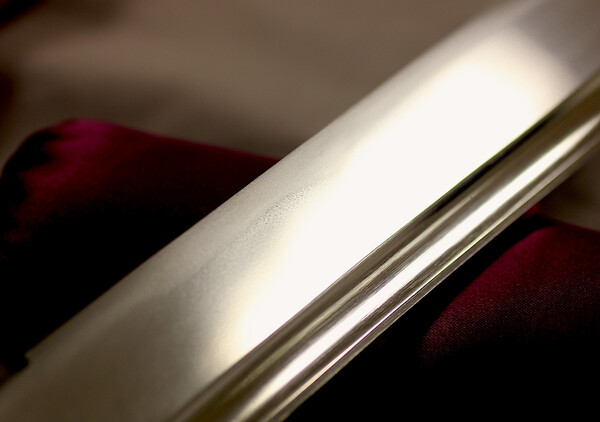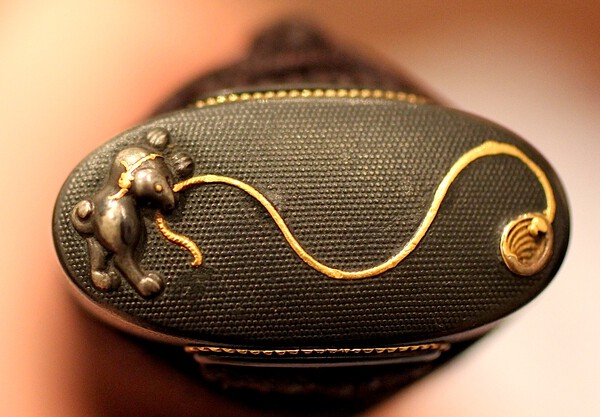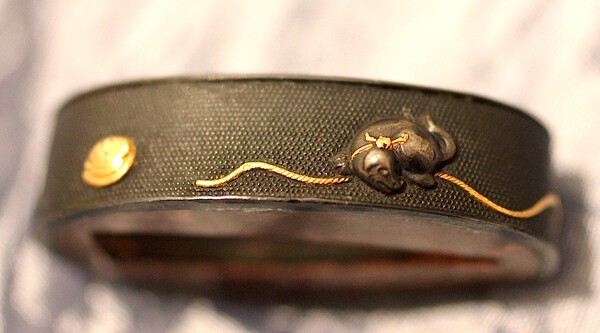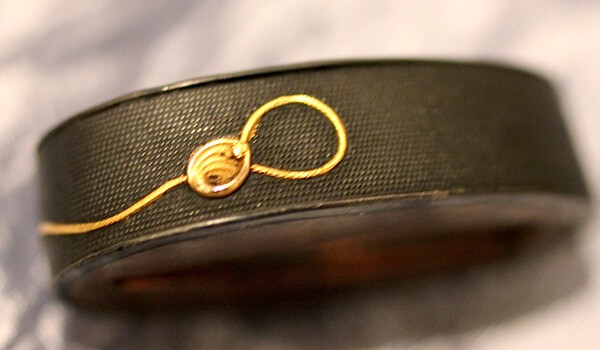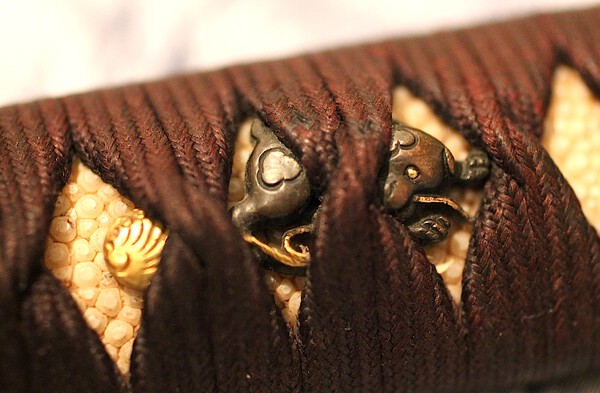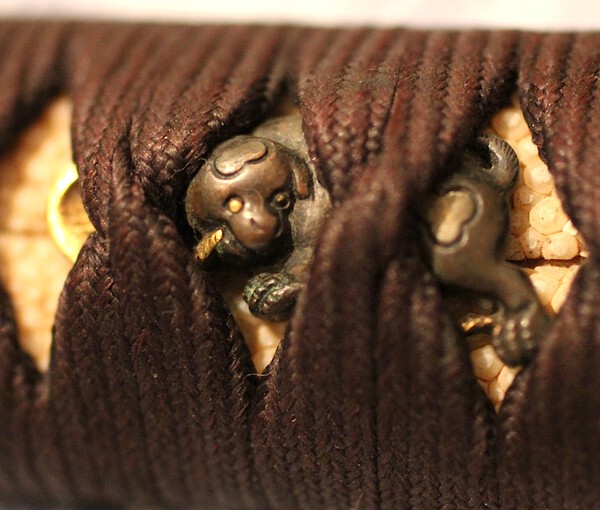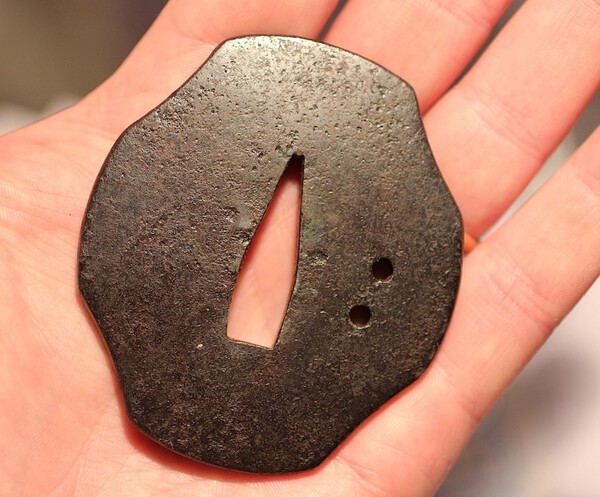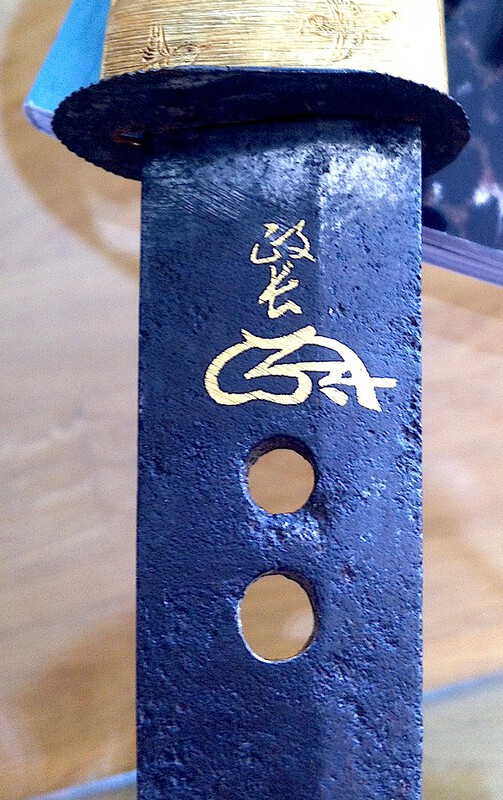-
Posts
529 -
Joined
-
Last visited
-
Days Won
2
Content Type
Profiles
Forums
Events
Store
Downloads
Gallery
Everything posted by Viper6924
-

Is There Such A Thing As A "boy's Gun"?
Viper6924 replied to Bazza's topic in Tanegashima / Teppo / Hinawajū
Look at the square shaped hammer, the rear sight and overall shape of the barrel. This is a cut down Kishu-style matchlock. And they chopped off quite a chunk. Perhaps the muzzle or front part of the rifle was destroyed at one time. Jan -
Bazza; If this Motoyasu is related to the smiths from Satsuma, by all means post a picture when you get a chance. I see these kinds of threads as mini capsules of informations. Great for future references. The more pictures the better, if you ask me. Brian; I´m sure you are right about this and I´m out on a wild goose chase :D I´ve also heard about the polishers mark but never seen one before. But you have to agree that the kanji is very similar to the one done by Motohira. Managed to take a real closeup of the kanji and under the habaki and I also include the end kanji from a Motohira mei. Jan
-
The floor of suggestions feels mighty empty right now... :lol: :lol: :lol: Jan
-
Chris: Thanks for the explanation of the mei. They really ran a family collective with fathers, sons and uncles. Peter: Thanks for the kind words. You better bring your A-game when you post nihonto related questions on this forum :D It´s def a tricky quest. Especially when you can´t speak or read Japanese. But thats why it´s worth the extra effort. Nothing easy is fun.. Here´s finally some pictures of my Motoyasu wakizashi. It´s a really heavy meat cleaver. A true Satsuma sword made for battle. Total length about 53 cm and it´s over 3 cm wide. A gentle sugata. The jihada is very subtle with nie along the entire hamon. Not so easy to catch with my camera. Along most of the blade runs a crisp hi. Finishing off with a Nanbokucho style o-kissaki. Signed and dated, comes with Hozon-papers. In near perfect condition apart from the nagako, which seen better days. But now it gets interesting. And why wouldn´t it with a Oku-family nihonto Imagine my surprise the first time I removed the habaki. On both sides is a small kanji ingraved in the middle of the hi. Never seen this before in any Japanese swords. The kanji is close to the "hira" in Motohira. Placed smack in the middle of the hi. Could this, a longshot I know, mean that Motohira (1 generation or perhaps a later edition) helped with the hi. Modest as the only the Japanese can be, he signed it and hid it under the habaki, not to take any cred from Motoyasu? I open the floor for suggestions. One thing is clear. This is a very interesting family to study. The fact that they also made exceptional swords, just makes it so much more fun. Jan
-
Guess that will be hard to obtain. We only have the link Peter posted earlier. But we have some digital masters here, so who knows what they can dig out of the interweb :D I would really like to know more about these brothers of Satsuma. Jan
-
Peter: A very beautiful translation and plausible in my eyes, at least. The complete read of the mei is still a bit "strange": "Made by Oku Motoyasu from Satsuma Oku Motohira the swordsmith from the lands end" Sorry in advanced if I fumbled with the translation Is this an act of respect shown by Motoyasu towards his older (?) brother Motohira? Or does it imply something else? Thanks for the translation, Peter! Jan
-
Mmm, interesting! I thought I might have missed somthing I always found this total lack of a dates for Motoyasu intriguing. Most other smiths from the late 18th and early 19th century is well documented. His two brothers are documented with dates for birth/death. But Motoyasu... All we really know is that he helped with the making of Motohiras swords and occasionally made some of his own. And that the ones preserved is very close to Motohira in both appearance and quality. Wonder in which way he assisted his older(?) brother? Mototake died relative early (compared to the other Satsuma smiths) which left Motohira and Motoyasu alone for ten years, well together with some of Motohiras sons I might imagine. This is def is worth digging deeper into. Any translation of the "...Oku Motohira meishite korewo zozu"? Jan
-
Thomas; I don´t feel I´m the right person to argue with Mr Fukunaga, but Kyoho 18 seems a bit strange considering that Motoyasu should be the youngest of the three 1753 perhaps... :D Peter; nice sword. Have all the traits you look for in a Satsuma sword. The sword is made by Motoyasu but I can´t translate the "...Oku Motohira meishite korewo zozu" part of the mei. Is that some kind of memorial inscription. Cos 183 years ago would be 1831 and Motohira died a few years earlier... Motohira:1744-1826 Mototake: 1748-1816 Motoyasu: ?-? The long life seems to have been a common thing amongst the Shinshinto smiths of Satsuma. Both Motohira and Motoyasu reached over 80. Masayoshi/yuki (another of the great Satsuma swordsmiths) died at 86. Must be something in those vulcanic winds from Sakurajima. Thanks for your help with this, guys! Jan
-
Nice blade, Chris! Got that "meaty" Satsuma look to it. These guys didn't play around when it came to heavy swords. I will take some pictures of my wakizashi later on. Got some really interesting features. Thanks for the picture, Chris! Jan
-
So we have dated work from at least 1821. That's interesting, Chris. Sounds like there is a good chance he might have lived passed Motohiras death at 1826. Motoyasu def had skills that was close to Motohiras. If he had been born the oldest of the three brothers, he probably been more well known and more of his work would have been avalible. Interesting group of brothers. Jan
-
Managed to find some info about Motoyasu in one of Seskos fantastic books. But not really helping me in this case, cos his death is apparently unknown and no date of birth is mentioned. I own a Motoyasu wakizashi signed and dates 1818, so at least he outlived his older brother Mototake who died 1816. The search goes on Jan
-
Thanks Peter for that info about Mototake. Also got info about the great Motohira. Just struggling with the youngest brother of the three. Motohira 1744-1826 Mototake 1748-1816 Motoyasu ?-? Thanks again, Peter! Jan
-
Hi guys! Doing a presentation about the shinshinto swordsmiths from Satsuma. Would love to know the dates (birth/death) of the three brothers Motohira, Mototake and Motoyasu. I find a lot of dates about when they were active but not when they lived. Also where in Satsuma they had their workshop? Thanks in advance! Jan
-
Thats a good looking crab-set, Franco. To a pair of untrained eyes like mine, I´m, having a hard time (judging from the pictures alone) to differentiate between high class Kyo-kinko and Waki-goto. As you said Franco, the uttori on these crabs are fantastic. Thick and well executed. Hmm, don´t know if these pictures helped me or not... :lol: Jan
-
This thread is turning out to be a veritable zoo of different creatures... :D :D :D Thanks Franco for your comments and picture of the Ko Goto Kogai. I´m in no position to argue with you opinion Would love to see some example of the Kyoto kinko work for comparison. Was not able to find any good example on my quick web-search. I also thought the nanako was of fairly good quality. Thats why I was interesting in finding out more. Very interesting to learn about the branch-families to the main Goto line (waki-goto). Must study more about this wonderful world of tosogu. Jan
-
Still suffering from the beer and sake from last night, I guess And thanks for your "thumbs up" on the puppys, Mariusz. Anything you can add towards a school? Jan
-
Who let the dogs out... :D I just love these puppys. Very nice fittings, guys. They are simple yet elegant. Perhaps the breed is Shiba. The imperial dog of Japan. Again, this theme seems fairly common. Especially amongst tsubas. Not been able to find any references to a school in my limited collection of tosogu-books. Jan
-
Thanks Bruno for sharing your tsubas and pushing me in the right direction. So this is actually quite a well known motif. Still little lost on the meaning. From the other thread I got a suggestion of "continue the family line" Well, sounds like something a samurai could have been wearing on his sword. Any other suggestions? And the school? Thansk again, Bruno! Jan
-
Hi guys! Have a matching set that, if possible, I would like to know a bit more about. It´s not signed. I guess pinpointing a maker is hard but I would settle with the school. It´s fitted on a sword from 1784 so I guess it would be made around that time. Puppy playing with a string. Damn cute... Thanks! Jan
-
Was going through some old threads and found this little interesting topic. Sorry to say I don´t visit the "Tosogu" area as much as I should. One area of collecting I def don´t master. But there is still hope :D Me and fellow boardmember Anthony, visited Kagoshima last year. Through contacts we got invited to the dojo of Jigen Ryo. A very old sword school famous for it´s aggressive style of fighting. We even got to train one hour with the current sensei and two of his students. When I say we, I should say Anthony. I managed to slip whilst in the bathroom, the very same morning, and broke my toe. Not my proudest moment... Anyway... Besides the traning (aggressively beating the daylight out of a tree trunk) we also got a tour of the dojos small museum. Amongst many interesting object connected to the Jigen Ryu, was a handfull of tsubas. Everyone showed the same traits. Very simple design. Two small holes punched into the iron. The overall size of the katana-tsubas was small compared to the "normal" tsubas. Through a interpreter the sensei kindly explained te reason for this look. The simple design reflected the economic situation for many of the Satsuma samurai. Having the largest number of samurais in Japan (over 30000) the individual samurai had a rather small stipend compare to other areas in Japan. The two small holes (the same size) was used as a way of control for the sensei. The first rule of Jigen Ryu is "A sword shall not be drawn from it´s scabbard unless it is to attack" The sensei tied a small string of ricepaper to the saya. If the student came back with the string broken, he had to explain the reason why. With the nature of the Jigen Ryu, I guess the student also had to present the head of his opponent The reason for the small size of the tsuba was very clear. A student of Jigen Ryu only needs one strike. Two strikes is inconceivably. Therefore there is no need for a big tsuba to protect the wearer of the sword. Nuff said!!! Here´s a picture of my Satsuma-tsuba Jigen Ryu-style. Looks very much alike the ones in the museum. Jan
-

Website Onihonto.com
Viper6924 replied to nihonto1001's topic in Auctions and Online Sales or Sellers
I´m now the current custodian (you never really owns a piece of history) of the Satsuma-tsuba. Just want to lift my hat to Jon and thank him for a really good experience from a buyers perspective. It took 4 days from the payment until it arrived in the land of the norsemen Jan -
After I´ve finished Mr Seskos latest book about tameshigiri my interest for this intriguing yet terrifying practise was woken. A friend has a sword with a tameshi-mei thats recently been up for discussion at another fantastic forum So far we have gotten a date: 26:th of July 1655. Would love to get some more of this translation sorted, just for the satisfaction of knowing whats behind the kanjis. There are some amazing "translators" here, so any further help would be greatly appreciated. Thanks guys! Jan
-
Eagerly waiting for my book to drop in the mailbox!!! Jan
-

Woodblock print with matchlocks!
Viper6924 replied to Viper6924's topic in Tanegashima / Teppo / Hinawajū
Piers, I feel rather honoured that you even consider comparing me with such great warlord as Shingen I might use a dual meaning in my replys... Good luck with the next couple of days hard competitions. Jan -

Woodblock print with matchlocks!
Viper6924 replied to Viper6924's topic in Tanegashima / Teppo / Hinawajū
Piers, so far they are all framed and hanging on the wall(s) :D But because of restrictions in the space-department I have desided to exclusively go after matchlock-prints in the future. Takes longer time between buys... I must have missed your matchlock prints, so please share a few whenever you have the time. Perhaps after next weekend Jan



